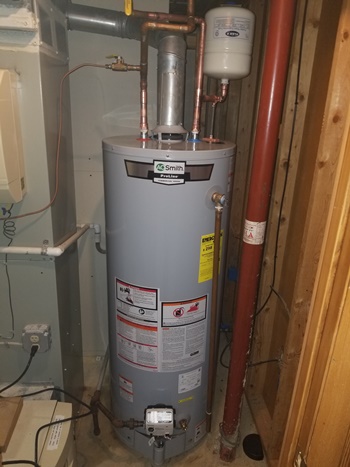Listed here down the page you'll find some helpful information and facts with regards to Tips on Maintaining a Water Heater.

Hot water is crucial for everyday comfort, whether it's for a rejuvenating shower or washing meals. To ensure your warm water system runs effectively and lasts longer, routine maintenance is vital. This short article provides functional suggestions and insights on exactly how to preserve your home's hot water system to stay clear of disruptions and expensive fixings.
Intro
Preserving your home's warm water system could seem daunting, yet with a few easy actions, you can ensure it operates smoothly for years to come. This guide covers whatever from comprehending your hot water system to do it yourself maintenance ideas and knowing when to call expert aid.
Significance of Preserving Your Hot Water System
Routine upkeep not only expands the lifespan of your warm water system however additionally ensures it runs effectively. Ignoring upkeep can result in lowered efficiency, greater energy expenses, and also premature failing of the system.
Signs Your Hot Water System Demands Maintenance
Understanding when your warm water system requires attention can stop significant issues. Watch out for indicators such as inconsistent water temperature level, weird noises from the heating unit, or corroded water.
Flushing the Water Heater
Purging your hot water heater removes sediment accumulation, boosting efficiency and extending its life.
Monitoring and Changing Anode Rods
Anode rods avoid rust inside the container. Inspecting and replacing them when worn is essential.
Complicated Concerns Calling For Professional Help
Examples consist of significant leakages, electric problems, or if your water heater is regularly underperforming.
Regular Expert Upkeep Conveniences
Professional maintenance can include extensive assessments, tune-ups, and making sure conformity with safety and security criteria.
Evaluating and Readjusting Temperature Level Setups
Readjusting the temperature level setups makes sure ideal efficiency and safety and security.
Do It Yourself Tips for Upkeep
You can do numerous upkeep jobs on your own to maintain your warm water system in leading problem.
Checking for Leaks
Frequently evaluate pipelines and links for leaks, as these can lead to water damages and higher bills.
Understanding Your Warm Water System
Prior to diving into maintenance jobs, it's handy to comprehend the fundamental components of your hot water system. Typically, this consists of the hot water heater itself, pipelines, anode rods, and temperature controls.
Month-to-month Upkeep Tasks
Regular month-to-month checks can assist catch small problems prior to they intensify.
Evaluating Stress Alleviation Valves
Evaluating the stress safety valve ensures it works correctly and protects against extreme pressure buildup.
Shielding Pipes
Shielding hot water pipelines lowers heat loss and can conserve energy.
When to Call an Expert
While do it yourself maintenance is helpful, some issues need specialist proficiency.
Final thought
Regular maintenance of your home's warm water system is necessary for effectiveness, longevity, and expense savings. By complying with these tips and understanding when to look for expert aid, you can guarantee a reliable supply of hot water without unanticipated interruptions.
Water Heater Maintenance: The Basics
Maintaining your water heater will ensure it operates efficiently and has a longer lifespan. Neglecting regular maintenance can lead to costly repairs and an even bigger chunk of your savings if you have to replace it sooner than necessary. But there’s good news: Most water heater maintenance tasks are relatively simple and easy for homeowners with basic DIY skills.
Flush the Water Heater
Over time, sediment and minerals can build up in the tank, reducing its efficiency and potentially causing damage. To flush the tank, turn off the power or gas supply, attach a hose to the drain valve near the bottom and open the valve to drain the water until it runs clear. Ideally, flush the tank annually.
Replace the Anode Rod
The anode rod is a sacrificial metal rod that helps prevent corrosion inside the tank. Inspect and replace it every three to five years or per the manufacturer's recommendation. To replace the anode rod, turn off the power or gas supply, drain a few gallons of water from the tank, unscrew the old rod and replace it with a new one. If the anode rod is significantly corroded or covered in calcium buildup, it's a sign the water heater may need to be replaced soon.
Tune-Up
A yearly tune-up can help identify potential issues and ensure your water heater operates at peak efficiency. This typically involves checking the thermostat, burner assembly (for gas heaters) and any other components specified by the manufacturer. During a tune-up, the technician may also clean the burner and adjust the pilot light (for gas heaters) or examine the heating elements (for electric heaters).
How to Maintain Your Water Heater
Insulate the tank. Insulating the tank can improve energy efficiency and reduce heat loss, saving you money on energy bills. You can purchase precut insulation blankets designed specifically for water heaters or use standard fiberglass insulation wrapped securely around the tank. Check the temperature. The recommended water temperature for most households is around 120 degrees Fahrenheit (49 degrees Celsius). Higher temperatures can increase energy costs and potentially cause scalding. Use a kitchen thermometer to check the temperature at the faucet nearest the water heater. Monitor water pressure. Excessive water pressure can strain the water heater and cause leaks or even tank failure. Install a pressure-reducing valve if necessary. The ideal water pressure range is between 60 and 70 PSI (pounds per square inch). Test the temperature and pressure (T&P) relief valve. The T&P relief valve is a safety feature that releases pressure if the tank gets too hot or the pressure builds up too high. Test it annually by lifting the lever and allowing a small amount of water to release. Replace the valve if it doesn't release water or reseal properly. Check for leaks. Regularly inspect the tank, pipes and fittings for leaks or corrosion. Deal with issues promptly to prevent further damage. Even a small leak can lead to significant water damage over time. Consider a tankless water heater. If your traditional tank-style water heater is nearing the end of its lifespan ( typically 10 years), consider replacing it with a tankless water heater. These units heat water on demand, reducing standby energy losses and potentially saving you money on your energy bills. Schedule professional maintenance. While homeowners can perform many water heater maintenance tasks, it's still a good idea to schedule professional maintenance every few years. A plumber or HVAC technician can thoroughly inspect the unit, identify potential issues and ensure it operates safely and efficiently. https://www.homeserve.com/en-us/blog/home-improvement/hot-water-heater-maintanence/

I'm very serious about Tips on Maintaining a Water Heater and I'm hoping you enjoyed reading our piece. Sharing is good. Who knows, you will be doing someone a favor. We cherish reading our article about Water Heater Maintenance Tips You Can't Afford to Forget.
This Website